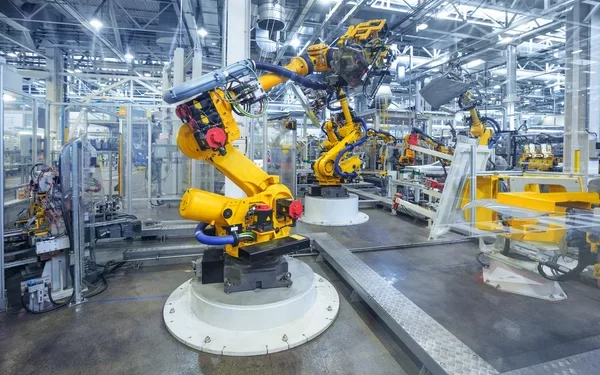In today’s technology-driven world, robots play an increasingly important role in manufacturing. With their ability to work quickly and accurately, robots can help increase efficiency and reduce labor costs in many companies. But there are other advantages as well – not only do they free up workers for other tasks on the factory floor, but they also help improve quality control and provide product consistency that would otherwise be impossible with manual assembly lines.
In this article, we’ll explore all of the benefits of robots to manufacturing processes and why they’ve become such a crucial component in modern production facilities.
What are robots in manufacturing?
Robots in manufacturing are a fantastic technology that has allowed us to revolutionize how we make products. They allow us to produce and assemble goods more quickly and accurately than ever before by precisely following instructions specified by engineers and coders. By taking on activities that can be potentially dangerous or too arduous for humans, robots can also help increase safety in factories.
Furthermore, robots can continuously learn and adapt, making them incredibly versatile machines tackling even the most complex manufacturing-related tasks. All this makes them a valuable asset for any production line and one of the clearest examples of how innovation has improved our lives.
What are the advantages of robots in manufacturing?
There are many advantages of robots in manufacturing, but some of the most important ones include the following:
The main benefit of robotic machinery is that it can work quickly and accurately. By taking on tedious tasks, robots free up workers for more critical tasks or help increase production speed. Furthermore, robotic machines can take on dangerous activities such as welding or operating hazardous materials, and this helps reduce the risk of workplace accidents and injuries.
Robots also have a tremendous impact on quality control. They’re programmed to follow instructions precisely and can identify flaws in a product before it even leaves the assembly line, ensuring only the highest-quality products are made available to customers.
Finally, robotic machines provide consistency by producing parts with slight variations from one part to the next. Their ability to handle repetitive tasks without fatigue makes them ideal for mass production and ensures that products are always made to the same exacting standards.
What industries benefit most from robotic machinery?
Robots are increasingly used in various industries, from automotive to food processing. However, some areas benefit more from this technology than others.
Aerospace is one industry that has seen a significant boost in efficiency thanks to the introduction of robots. These machines can increase throughput and dramatically reduce production costs by taking on tasks such as welding and assembling parts with precision.
The medical industry also stands to gain significantly from robotics. Robotic systems can be programmed to perform surgical procedures more precisely and accurately, while their smaller size makes them well-suited for working inside the body.
Finally, manufacturing companies across all sectors stand to benefit from robotic machinery. These machines can help speed up production processes, free up workers for other tasks, and offer more consistent quality control and improved safety.
How do robotic manufacturers ensure the safety of their robotic machinery?
Robotic manufacturers take safety seriously and go to great lengths to ensure their machines are as safe as possible. They use a variety of sensors to detect any potential hazards around the robot, such as the human presence or objects that the robot’s movements could damage.
Robot manufacturers also employ multiple layers of safety systems, including interlocks, software-based safety circuits, and emergency stop buttons. It ensures that if anything goes wrong with the machine, it can be shut off quickly and without any danger to nearby people.
Finally, all robotic machinery must pass rigorous tests before they’re approved for use in production facilities. It helps identify risks early on and allows manufacturers to make modifications or adjustments where necessary.
Why is robotic machinery becoming increasingly popular?
Robotic machinery is becoming increasingly popular due to its numerous advantages over traditional production methods. As mentioned, these machines can work quickly and accurately while providing consistency, improved safety, and higher quality control.
Furthermore, robots require little maintenance and can operate 24/7 without rest or fatigue. It makes them ideal for long-term projects that must be completed within a specific timeframe. Additionally, they don’t require the same kind of physical labor as humans, so they can help reduce workplace injuries related to manual labor.
Finally, robots are becoming more affordable and efficient with each passing year. Technological advances mean that it’s now possible to purchase smaller robotic systems than before, which can be invaluable for small and medium-sized businesses. It makes them an excellent option for companies looking to increase efficiency while keeping costs down.
In conclusion
Robotic machinery is quickly becoming an invaluable tool for a variety of industries. Thanks to their accuracy, efficiency, and cost-effectiveness, robots are now used in many sectors to improve production processes and streamline operations. It makes them a desirable option that looks set to become even more popular.
Robots will become more valuable and versatile with continued technological advances, making them an even more significant asset to businesses worldwide. In short, the advantages of robots in manufacturing are hard to ignore.
Also Read interesting Articles At: Tech New Master.


















